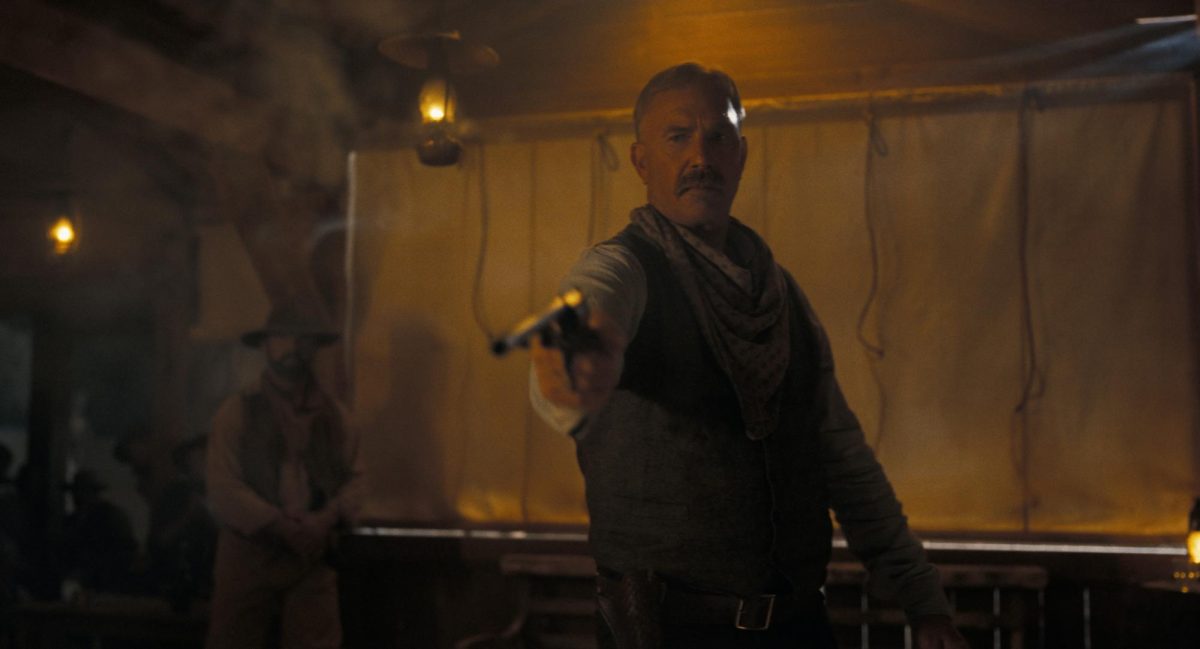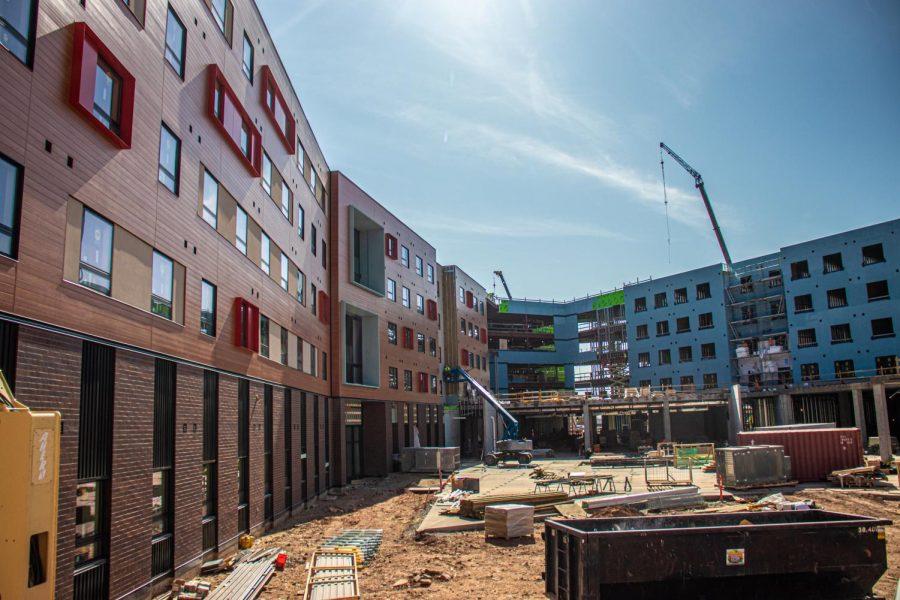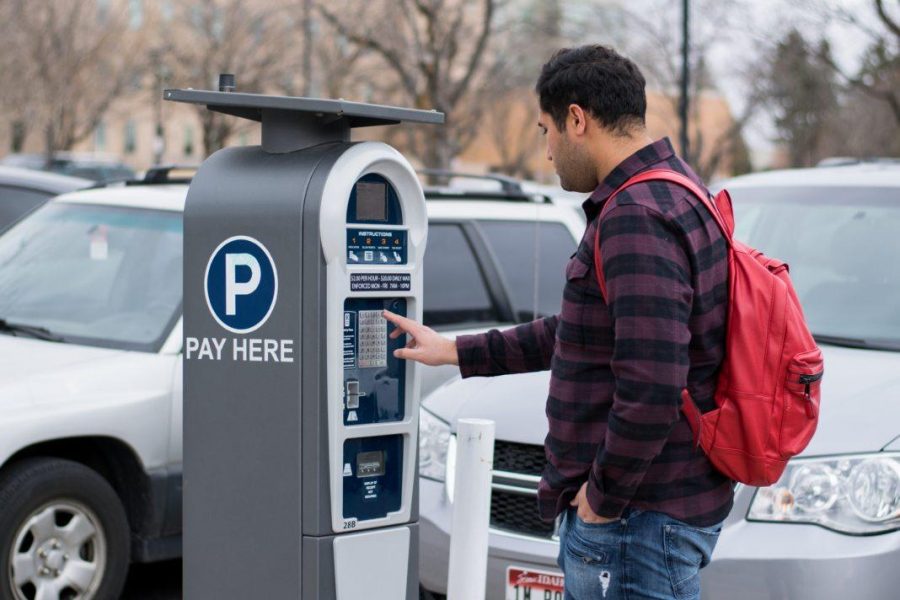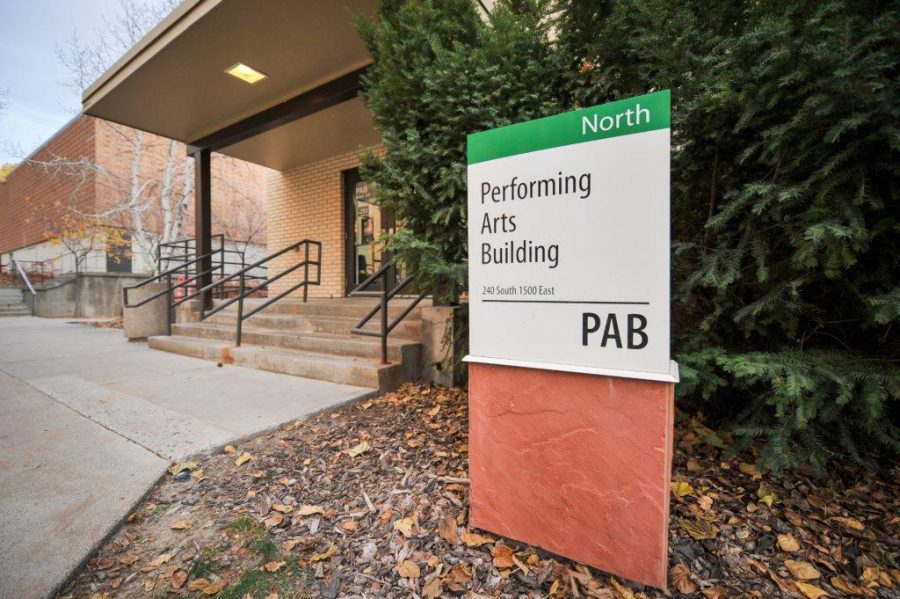CORRECTION FROM PRINT ARTICLE: The list from the 1997 Uniform Code for the Abatement of Dangerous Buildings was included to provide context, and not necessarily to assert that the Performing Arts Building is not up to code. The passage below has been amended.
No time to read? Hear details on this story in our investigative podcast, Floodlights, for news on the go.
http://kuteradio.org/talkshows/performing-arts-building/
Over the past few years, members of the University of Utah community have endured the inconveniences of a number of renovation and construction projects across campus. Orson Spencer Hall (OSH) and Milton Bennion Hall (MBH), both built in the ‘50s, were demolished in 2016 and 2017, respectively. The George Thomas Building — which is set to house the Crocker Science Center — has been under construction for nearly two years. Students in the Department of Theatre hoped the Performing Arts Building (PAB) would be next, as they feel it is in disrepair.
Outdated Facilities
As one of the oldest buildings on campus, PAB was built in 1920 and has never undergone any major renovations and classes have never been relocated. In 2009, the U gave funding to repair the building’s restrooms and to address other small issues, according to Cate Heiner, a U alumna and former member of the arts Student Advisory Committee (SAC).
“Most frequently, classes would be interrupted by loud banging noises coming from the pipes and extremely irregular heating and cooling,” Heiner wrote in an email. “Ceiling tiles were known to crumble or [fall] apart, and chairs in the 103 lecture room were known to break. It wasn’t unusual to see bugs — ants, silverfish, boxelder bugs — walking on the floors during class. Because of the bugs, students were often asked not to bring food or eat in class.
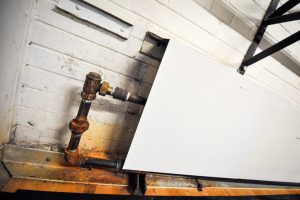
“As much as we love PAB, we frequently run into issues of falling ceiling tiles … and a lack of temperature regulation. It is not uncommon to see a dance class rehearsing in their full winter gear.”

With physically demanding classes, such as theater, this is particularly worrisome for those who spend most of their day in the building. Heiner and other members of the committee recognized the important role environment plays in education and worked to raise funds for small projects, such as fumigation and cleaning.
“The bathrooms were replaced the summer before I started at the U [in 2009] and they were extremely nice, but other than that any changes have been minor to simply fix issues for the time being,” Heiner wrote in an email. “At one point, a professor who is no longer at the U told a class of students she had secured money through grants that would cover replacing the floors in some spaces — [rooms] 110 and 202 particularly — but to my knowledge nothing has been changed.”
“In terms of location it’s really been a good building, but unfortunately the heating and air conditioning system is way outdated and it either needs to be totally replaced or something else,” said Gage Williams, chair of the Department of Theatre.
He explained when there are problems, all that can be done is to “give it a patch and [we] hold our breath. So a majority of the time it’s either too cold or too hot and that’s a problem.”
Williams went on to say university officials are making efforts to fix smaller problems throughout the building. This past spring, a larger fix was attempted on the heating and air conditioning system. The U made some updates in the bathrooms, laid down new carpet and repainted the walls.
The state of Utah has adopted property codes that address everything from personal housing to commercial buildings. Education buildings, from preschools to universities, are considered commercial buildings and are the fifth most common commercial building in the United States.
Under the commercial building classification, buildings on the U’s campus must comply with all state codes. There are 18 rules outlined by the International Conference of Building Officials in the 1997 Uniform Code for the Abatement of Dangerous Buildings. According to those rules, a building is considered legally dangerous when:
1-2. The doors/passageways/stairways are damaged or warped to the extent people can’t safely exit during a fire or in a panic.
3. The building can’t hold one and a half times the weight of the building itself and the load it must carry.
4. Pieces of the building or its foundation aren’t secure or are damaged by natural disaster.
The U’s Planning, Design and Construction department annually inspects all buildings on campus for structural damage to ensure each one is in compliance with this code and the Seismic Evaluation of Existing Buildings code. The biggest element of the code that is concerning in PAB is that pieces of the building are not secure, such as the piping and radiators.
“All of our buildings meet code when they are constructed,” said Shireen Ghorbani, a spokesperson for the department. “As renovations or remodels occur in buildings around campus, those areas are brought up to code at the time that work is complete. We also take into account seismic evaluations. Currently, we have a project underway that is a seismic upgrade to the Social and Behavioral Sciences Building. … Sometimes conditions in the [other] buildings mean that certain work is prioritized.”
Although it was built in 1920, PAB is not on the list of historic buildings in the Salt Lake Public Registry, and is therefore not subject to the same restrictions as those in Presidents Circle in regards to construction on the building.
Security and Size Issues
The building’s condition isn’t the only problem its occupants deal with.
“Security is a problem with the building,” Williams said. “The homeless population has substantially increased in Salt Lake over the years and with recent efforts downtown to make it difficult for them to loiter, I think there’s been an increase in homeless population looking toward other places, so there’s a number of homeless people in our building.”
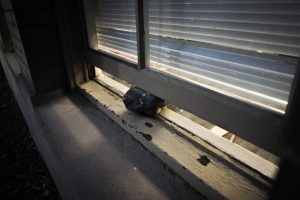
Williams did note many buildings on campus may deal with security challenges.
While student safety is an important issue to address in relation to the homeless population spending time in PAB, Williams said at this time, “There isn’t really much the faculty and the students can do themselves, other than, you know, [take] caution and make sure everyone knows that homeless [occupants are] an issue and if you don’t feel safe or secure in the building, leave the building or make sure you’re with somebody, especially because in our building we have rehearsals that go late at night.”
Many students and staff try to leave PAB by 11 p.m., but this isn’t always realistic for students who have to work around classes to complete scene studies, finish homework and attend rehearsals. Williams explained that faculty in the department have met with deans and administrators about this problem and they are doing their best to find a solution to make the building more secure.
Despite the issues with the building’s condition and security, the biggest concern the theatre department has to address is limited space.
Nearly 10 years ago, the U’s 2008 Master Campus Plan noted that, “The Theatre Department within the College of Fine Arts has been sorely in need of upgraded academic facilities as well as a performance venue,” and the department was named as a potential candidate for future residence in the George Thomas Building. Some time before the plans were updated in 2010, however, it was decided that the building would be used for scientific research.
“The major problem is we’ve totally outgrown it,” Williams said. “PAB isn’t sufficient in size to office all of our faculty and staff, it’s not sufficient in size for us to offer our curriculum, it’s not sufficient in size for a large faculty to gather and have meetings as a group. … [Because PAB is] sandwiched between [the] biology [building] and the bookstore, it can’t grow.”
The number of theater majors was at 236 after the department added a musical theatre program. Students are now taking classes in several buildings across campus — PAB, the dance studio in Kingsbury Hall, the Pioneer Memorial Theatre’s dance studio, the Fine Arts West Building and the Marriott Library.
According to Williams, the U has made an effort to provide space for the expanding department, but because there isn’t a solid plan in place, students shouldn’t expect any major changes within the next few years, though it is a high priority on the university’s agenda.
Students See Little Change
Those working in PAB are aware of the building’s issues, but to current and former students, like Heiner, little appears to have been done. Heiner said during her time with the SAC, she and other members of the arts community at the school collaborated on a petition requesting fumigation and cleaning services be provided to the building. They then sent the petition to Liz Leckie, associate dean of undergraduate affairs at the U, but according to Heiner, no action was taken.
Leckie did not respond to requests for comment.
“We also brought up issues with the building during an annual meeting organized through the university,” Heiner said.
After the meeting, Heiner said the SAC began to focus on finding alternate spaces for professors to conduct classes, like studios in the dance building or the arts and education center. However, the committee did not have the time nor resources to make deals with administration to use rooms in those buildings.
One of the factors contributing to the building’s disrepair and lack of funding may be the U’s inability to attract new students. According to the U’s 2016 finance report, student tuition only covers about 8.6 percent of the funds necessary for the school’s day-to-day operations. In comparison, nearly 50 percent of the U’s revenues that year came from its hospital system.
Revenue from student tuition doesn’t go nearly as far as many would expect — it only helps to pay for a small part of tenured professors’ salaries. Because tuition covers only part of faculty’s paychecks, a $30 Student Success Fee was recently introduced to help the U provide students access to internships, improve academic advising and improve the quality of general education classes — all with the goal of encouraging students to graduate faster.
In order to recruit and enroll more students, the U has to allocate more money to the majors in which the greatest proportion of students are interested in pursuing degrees. According to The Princeton Review, the most popular majors in the U.S. are computer science, communication, political science and business. As more students become interested in STEM and business fields, the U is directing funds toward updating equipment in those departments and funding research. Since art-related degrees have lower enrollment numbers, more funds are being directed to other programs.
Many students find a home away from home within buildings like PAB, and while the university celebrates the expansion of certain aspects of its campus and looks forward to the creation of new buildings, existing ones appear to be an afterthought.
@ladyofth3lak3
Disclaimer: Cate Heiner is a former staff writer for The Utah Chronicle.








